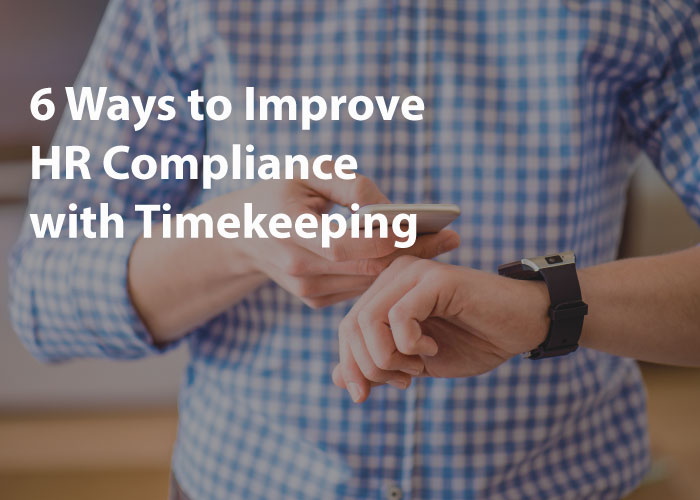In HR, there are many compliance concerns. The list grows yearly. From hiring practices to employee relations and wage and hour law, there's numerous pitfalls to watch for. For wage and hour in particular, things such a rest and meal periods, overtime and so on, remaining compliant can even be a moving target as legislation is rapidly evolving in this realm. Compliance related to employee hours continues to grow in complexity.
One of the best and perhaps the single most effective way to remain compliant is to implement an automated or web-based time and attendance system that can automatically ensure your company observes local, state and federal laws for wage and hour.
Below is a list of 6 ways a timekeeping solution keeps you in check.
1. Accurate Records
Accurate records are basic blocking and tackling for compliance. Without them, there is no proof of compliance, no predictability, no efficiency. Here are a few stats to consider:
- 1-8% human error according to the American Payroll Association
- 50% payroll errors found only when an employee complains
- 33% of employers make payroll errors, costing billions annually
- 7 minutes per time card per pay period lost to manual preparation, verification, reconstruction, verification and calculation by shift. That's 7 hours per pay period of potential savings for 60 employees
Integrating time and attendance with payroll dramatically reduces cost and risk:
- 30% fewer payroll errors and 1/3 fewer errors in tracking time worked
- 63% lower error rate for tracking actual time worked according to Aberdeen
- 67% lower error rate for time off accrual calculations
- 74% of employers experience payroll losses related to buddy punching (2.2% of gross payroll)
- 20% of every $1 earned by a US company is lost to employee theft
- 4.5 hrs per week or the equivalent of 6 weeks of vacation average time employees incorrectly reported
2. Instant Access
When records are easily accessible, they are less likely flawed.
- Employee portal for schedule and time cards
- Supervisor portal for scheduling and review
- Administrator portal for setup and multiple location management
- Auditors for proof of compliance
3. Analytics / Reporting
Immediate proof of compliance. Data is only useful if it is available. Automated timekeeping data can be analyzed for trends, compliance and strategic planning.
- Coverage
- Wages
- Overtime
- Schedule adherence
- Contract Labor
4. Compliance Reports
Federal, state and local agencies all have their own reporting requirements. Automated timekeeping makes compliance reporting much easier.
- Affordable Care Act
- Fair Labor Standards Act
- Family Medical & Leave Act
- Meal & Rest Breaks
- Off the Clock
- Punch Rounding
- Records and Reporting
5. Wage & Hour Calls
Governments at local, state and federal levels set labor laws. Compliance with these laws requires careful calculation and constant oversight. Automated timekeeping automatically applies rules and runs
necessary calculations.
6. Mobile Workforce
Workers often travel between multiple locations. Tracking time spent traveling and at each location can be difficult. Automated timekeeping
takes the work out of this.
Consider a Professional Employer Organization for HR Outsourcing
If you have questions about automated timekeeping and/or advanced scheduling for your organization, we encourage you to contact a PEO specialist with Zamp HR to learn more. Experience the Zamp HR difference for yourself. For additional questions, please contact us online or by phone.


